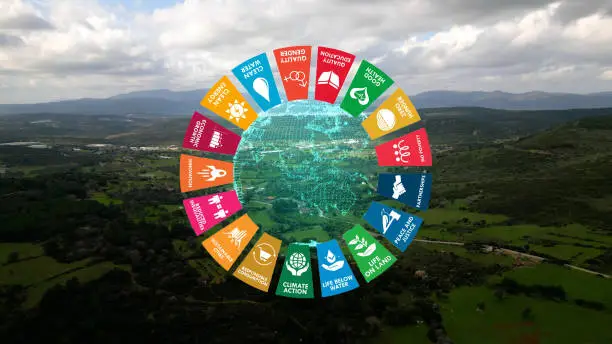As of 2023, approximately 600 million Africans still lack access to electricity. In 2020, only 31.7% of the African population could access public transport within walking distance, while 450 million people—over 70% of the rural population remain unconnected to transport systems. Meanwhile, 319 million people in sub-Saharan Africa do not have access to improved and reliable drinking water sources. These statistics paint a troubling picture of a continent grappling with significant infrastructure deficits. The slow pace of progress threatens Africa’s ability to meet the targets of Sustainable Development Goal 9 (SDG 9), which emphasises building resilient infrastructure, promoting inclusive industrialisation, and fostering innovation.
10 years after the SDGs were established, progress remains minimal, and with just 5 years left until the 2030 deadline, the urgency to act has never been greater. The SDGs represent a global commitment to ensuring economic, social, and environmental well-being for all. However, infrastructure, the backbone of sustainable development remains one of the areas where progress has been most elusive. Without accelerated action on SDG 9, the vision of a prosperous, inclusive, and sustainable Africa by 2030 will remain a distant dream.
Infrastructure lies at the heart of economic growth and human development. SDG 9 influences access to healthcare, education, and energy, while also driving employment, reducing inequalities, and supporting environmental sustainability. Yet, across the continent, there are glaring infrastructure gaps that hinder these objectives. For Africa, the next 5 years represent a make-or-break period, requiring bold, strategic, and collaborative actions to achieve the SDG 9 targets.
The 2024 SDG Report reveals sobering findings: of the 54 African countries evaluated, progress on Goal 9 is stagnating in 21 nations, with moderate or significant challenges persisting. Only 4 countries are currently on track to meet the 2030 targets. Despite this troubling reality, there are glimmers of hope. Projects like the Ethiopia-Djibouti Railway, which became operational in 2018 as Africa’s first fully electrified cross-border railway, demonstrate the potential for infrastructure to transform trade and economic activities. Similarly, Nigeria’s Lagos-Ibadan Railway, completed in 2021, has significantly improved passenger transportation. In the energy sector, Kenya’s Lake Turkana Wind Power Project, Africa’s largest wind farm now generates 310 MW of electricity, contributing to clean energy and sustainability in East Africa. These milestones prove that with the right investments, policies, and partnerships, progress is possible.
As the clock ticks closer to 2030, the question remains: can Africa meet the targets of SDG 9? This will require governments across the continent to adopt bold and innovative strategies. This article highlights three (3) areas of priority to chart the course. First, national policies must prioritise infrastructure development, aligning long-term plans with global frameworks like the United Nations Agenda 2030 and regional initiatives such as the African Union Agenda 2063. These policies should set clear, measurable goals in critical infrastructure sectors, including energy, transportation, water, sanitation, and ICT.
Second, governments must demonstrate their commitment by increasing budgetary allocations for infrastructure development. While many African nations struggle with debt burdens and economic crises, they must find innovative ways to fund these projects. This could include leveraging public-private partnerships, which have proven successful in mobilising resources and expertise, as well as developing bankable projects that attract foreign and domestic investments.
Finally, regional cooperation is vital to Africa’s infrastructure success. Fragmented efforts will no longer suffice. African countries, especially least developed countries, war torn and fragile states must embrace collaboration, particularly for cross-border projects that can transform regions and sub-regions. Neighbouring countries pooling resources for large-scale infrastructure projects such as transnational railways, highway corridors, and energy initiatives could have far-reaching impacts.
Africa stands at a crossroads. The next 5 years are critical for delivering on SDG 9 and ensuring a sustainable future for the continent. The progress achieved so far demonstrates that the future of SDG 9 in Africa is not a lost cause. With bold policies, increased investment, and regional solidarity, Africa can turn its infrastructure dreams into reality by 2030. The time to act is now!

